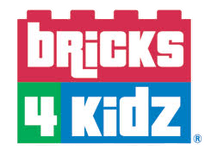Sometimes, to get kids interested in science, you have to ask the right questions. One of these is: “Hey … would this float?”
When you experiment with liquids and helium, kids learn surprising lessons about weight, buoyancy and density. Hopefully, these are lessons that will stick when it comes time to study these subjects in science class.
Why do things float?
Before you get your home “float lab” off the ground, start with an empty beverage bottle, cap tightly fastened. If you push that empty bottle to the bottom of a bin of water, up it pops. What that tells us is air is lighter than water. This can also be a useful aid in explaining why a helium balloon floats: The gas is lighter than the air we breathe, so when we confine it in a balloon, up it rises.
Float some of these fun experiments
* Grab some favorite LEGO Bricks and a helium balloon (or several, if you’re coming off a special event). Build a small structure and attach it to the balloon. Do you have liftoff? If so, keep adding bricks until it anchors the balloon in place. How many bricks did it take?
* Take the float test up a notch and play with their expectations with this great variation. Gather up several cans of beverages: regular soda, diet soda, sparkling water and juice. Will these cans float or sink in a bin of water? Do the contents of the can make a difference? If so, what are the possible causes?
* Now that you’ve made tasty beverages float, let’s play with eggs. Did you know you can get eggs to float? What you’ll want to do is place the egg in a large liquid measuring cup of water, where it should sink to the bottom. Start adding salt, one tablespoon at a time, and watch what happens. Salt increases the mass of the water, which makes it denser. Eventually, the water becomes dense enough to support an egg. (Fun fact: Older eggs float too, because an air cell inside enlarges with time, giving it enough buoyancy to rise to the surface. This does not necessarily mean they are rotten, however. Before you get started, make sure they’re good and fresh.)
* Now that they know salt changes the density of water, how do other fluids compare? A fun and colorful way to explore this is with a seven-layer density column. Is rubbing alcohol heavier or lighter than water? What about honey? Cream? Dish soap? When you’re done, be sure and round up some small objects and drop these into the mix, and watch to see which layers they land in.
